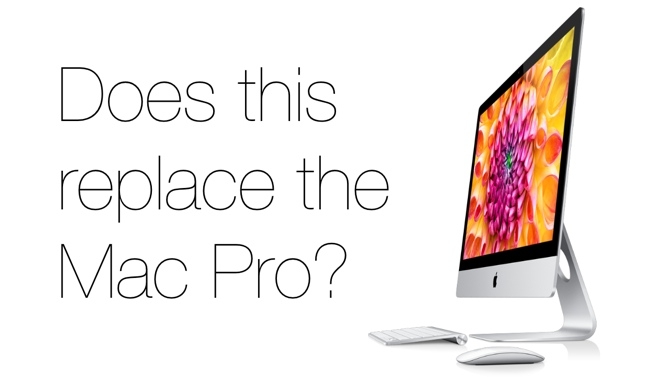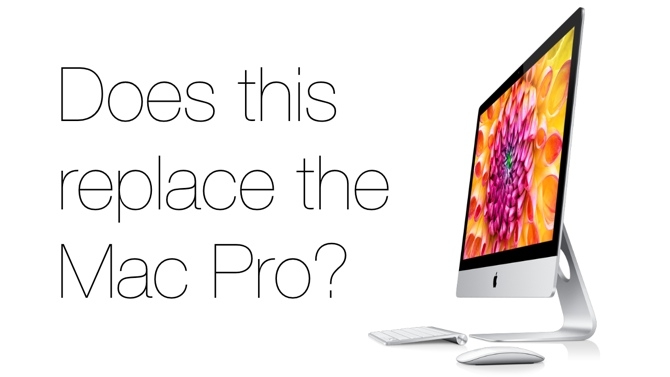
 Does this replace the Mac Pro?
Does this replace the Mac Pro?
For almost a decade, the Mac Pro has been the workhorse for video editors, VFX artists and animators. But there hasn't been a new model for years, and - consistent, perhaps, with Apple's disastrous launch of Final Cut X, there is a very strong sense amongst professionals that their needs are not foremost in Apple's minds.
Meanwhile, nothing stands still, and the sheer power of what would previously been considered "consumer" computer set-ups is now at the level where these seemingly "domestic" machines - like the new iMacs, are often more than sufficient even for editing HD video.
Thunderbolt
The Mac Pro last received a small speed increase in June 2012, but apart from that has had no radical upgrade for several years and - strikingly - still has no Thundebolt. Maybe Apple's thinking is that Thunderbolt is essentially a PC data bus that can be externalised. So there's now no need for expensive plug-in cards, because you can daisy-chain them on your desk; mixing and matching in a million different combinations. With no need for plug-in cards, and with no speed disadvantage with external storage, then, in that sense, there's no need for a Mac Pro (although Apple has hinted that there might be a new one sometime in 2013).
One advantage with iMacs is that they come with high resolution screens. The 27" monitor is higher than HD resolution, and in some ways is nicer to use than the traditional twin monitors. We wouldn't be surprised if the next big iMac announcement is for a new, even bigger model with a 4K screen, which Apple would probably describe as "Retina".
Meanwhile, if you really do need the ultimate in power-user workstations, you might have to acquaint yourself with Windows 8.
Tags: Technology


Comments